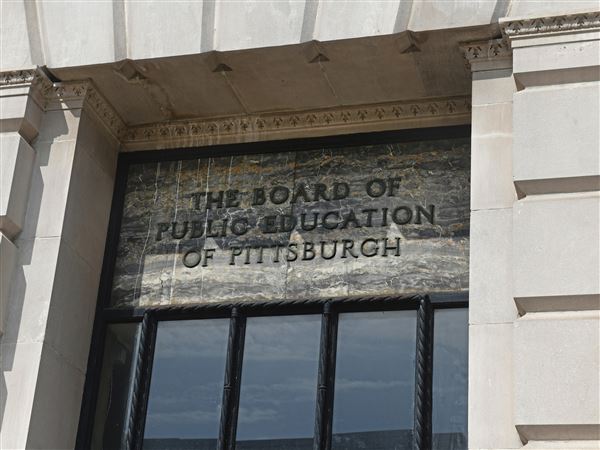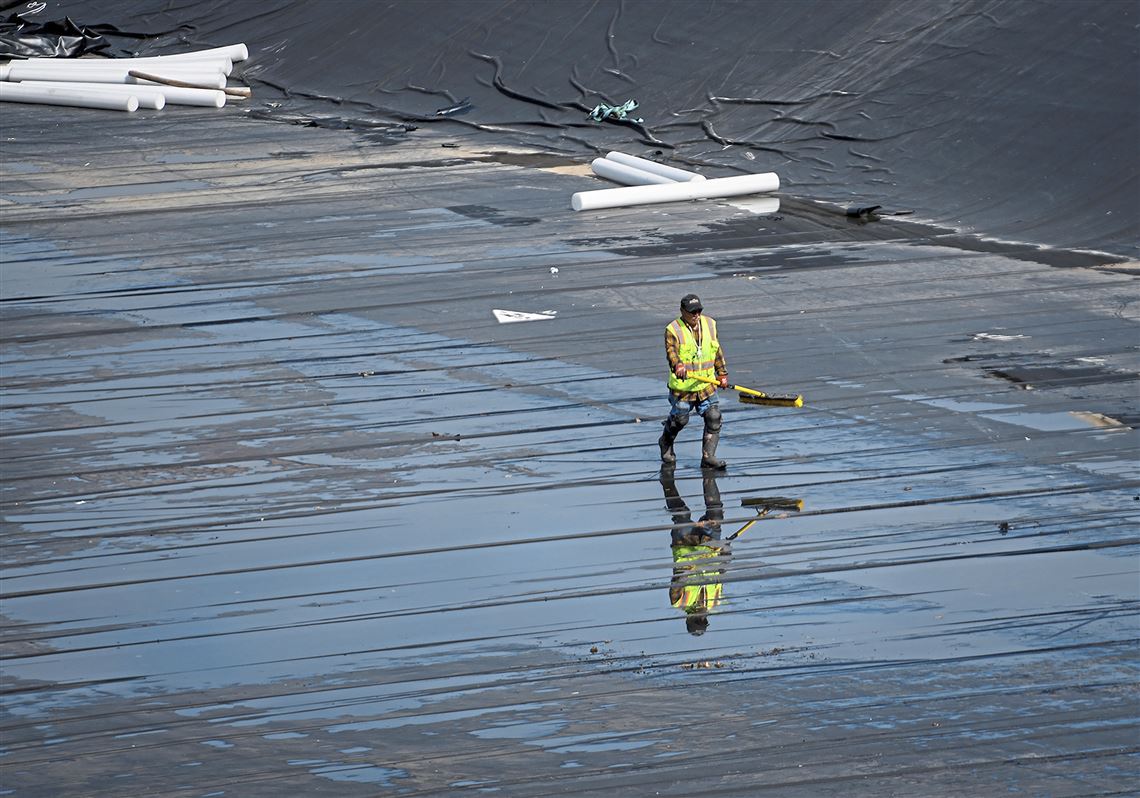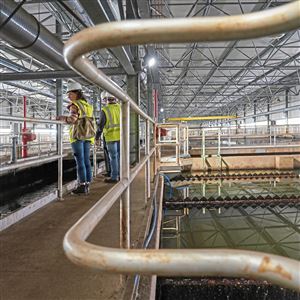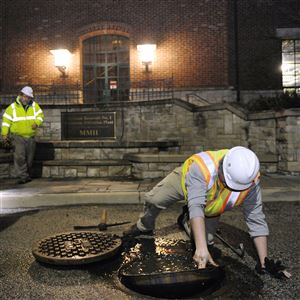From atop the Highland II Reservoir, one can see the efforts being made to replace part of the century-old water filtration system as workers labor over the first physical phase in the Pittsburgh Water and Sewer Authority’s Water Reliability Plan.
In a way, the reservoir is getting a promotion.
It used to house the water before it is pumped to portions of Downtown Pittsburgh, Squirrel Hill, the South Side and the West End.
Now, the 125 million gallon tank will act as a clearwell, while the original in Aspinwall is upgraded.
The plan essentially has been in the works since 2018, starting with the inception of the idea to modernize the city’s water distribution system.
Since then, PWSA has applied for state funding, received it and, finally this spring, began the first step: upgrading the Highland II Reservoir, which is located in Highland Park above the Pittsburgh Zoo & PPG Aquarium.
PWSA is under orders from the Pennsylvania Department of Environmental Protection to replace the original 44 million gallon water tank — housed at the Aspinwall Water Treatment Plant, across the street from the Waterworks shopping center — which performs a pivotal step in the water filtration process. The clearwell acts as a holding tank for water so that the added chlorine has time to disinfect the water before it is sent into people’s homes.
The tank in Aspinwall is the only clearwell PWSA has. That’s why the Highland Reservoir is being converted.
But converting a reservoir into a clearwell is “not a common occurrence,” said Sarah Bolenbaugh, the senior group manager for water programs at PWSA.
“Had we had an easier way to do it, we would have chosen that,” she said. “But one of the reasons we chose this option of turning these reservoirs into temporary clearwells is that, looking at all the other options, they all cost a lot of money. But none of them had any secondary benefit.”
An alternative solution would have been for PWSA to build a new, temporary clearwell and then, once the original was repaired, tear the temporary one down. But by instead converting the reservoir into a clearwell, the PWSA is making necessary updates to a structure that will stay in use after the Water Reliability Plan is finished.
“We’re spending money that we needed to spend anyway,” Ms. Bolenbaugh said.
During a walkthrough of the future clearwell Friday with state and local elected officials — including state Reps. Summer Lee, Emily Kinkead and Nick Pisciottano — PWSA CEO Will Pickering showed off the progress workers have made since March.
The reservoir’s new liner has been installed, and its new cover is nearly finished.
“All of the plans that we have at work, including this reservoir, are aimed at replacing that clearwell with a structure that is more sound … and give us maybe another 100 years of life into our drinking water,” Mr. Pickering said.
The PWSA estimates that this part of the project — which is the largest of its kind in North America — is about two-thirds complete. Officials expect it to be finished by November.
The Water Reliability Plan will cost about $470 million. In late July, the PWSA received a $209 million loan through the Pennsylvania Infrastructure Investment Authority to help pay for the plan. The loan has an interest rate of about 1%, which will save the authority about $156 million in interest fees, according to Mr. Pickering.
Other funding for the project will come from proposed rate increases for users over the next two years, according to PWSA spokeswoman Rebecca Zito. The PWSA estimates the price hike will generate $6.65 million the first year and $9.98 million the second.
In the meantime, the PWSA is continuing to pursue other loans through organizations like the Environmental Protection Agency to fund the project so that it can minimize the rate increases customers see, Mr. Pickering said.
In addition to updating the Highland II Reservoir, the Water Reliability Plan includes updates to various water lines and pump stations.
Through all of these upgrades, Ms. Bolenbaugh said she expects minimal service interruptions.
“We have a very intricate and complicated schedule of outages,” she said, explaining that various teams met to determine what areas would have outages when and how they could use other pump stations to continue to provide service to city residents.
“That’s been a lot of the focus of our work, is working through all of those outages to make sure that nobody realizes everything that we’re doing,” Ms. Bolenbaugh said.
There could still be minor inconveniences, particularly for people who live in the Highland Park area, as construction vehicles bring additional traffic, Mr. Pickering explained.
Adjacent to the Water Reliability Plan, work is also being done at the nearby Highland II Reservoir Pump Station, which moves water from the reservoir to various parts of the city.
The plans include significantly expanding the pump station’s capacity from about 3 million gallons of water to over 56 million gallons. Construction is set to begin this fall and is expected to be completed by 2025.
That upgrade is not technically part of the Water Reliability Plan because plans for it were already underway when the state mandated the clearwell replacement.
Additionally, the PWSA is also continuing its work in removing lead water lines from various neighborhoods as part of a citywide project started in 2016.
“Six years ago, we were faced with multiple, overlapping crises: lead levels, boiling advisories and failing infrastructure,” Jake Pawlak, the city’s Director of the Office of Management and Budget, said during Friday’s tour of the reservoir. “The progress that the authority has made since then … to improve the quality and responsiveness of service is phenomenal.”
Hallie Lauer: hlauer@post-gazette.com.
Correction: This story was updated on Sunday, Aug. 7, to correct Will Pickering’s title. He is CEO of the Pittsburgh Water and Sewer Authority.
First Published: August 6, 2022, 10:00 a.m.
Updated: August 6, 2022, 12:18 p.m.


















